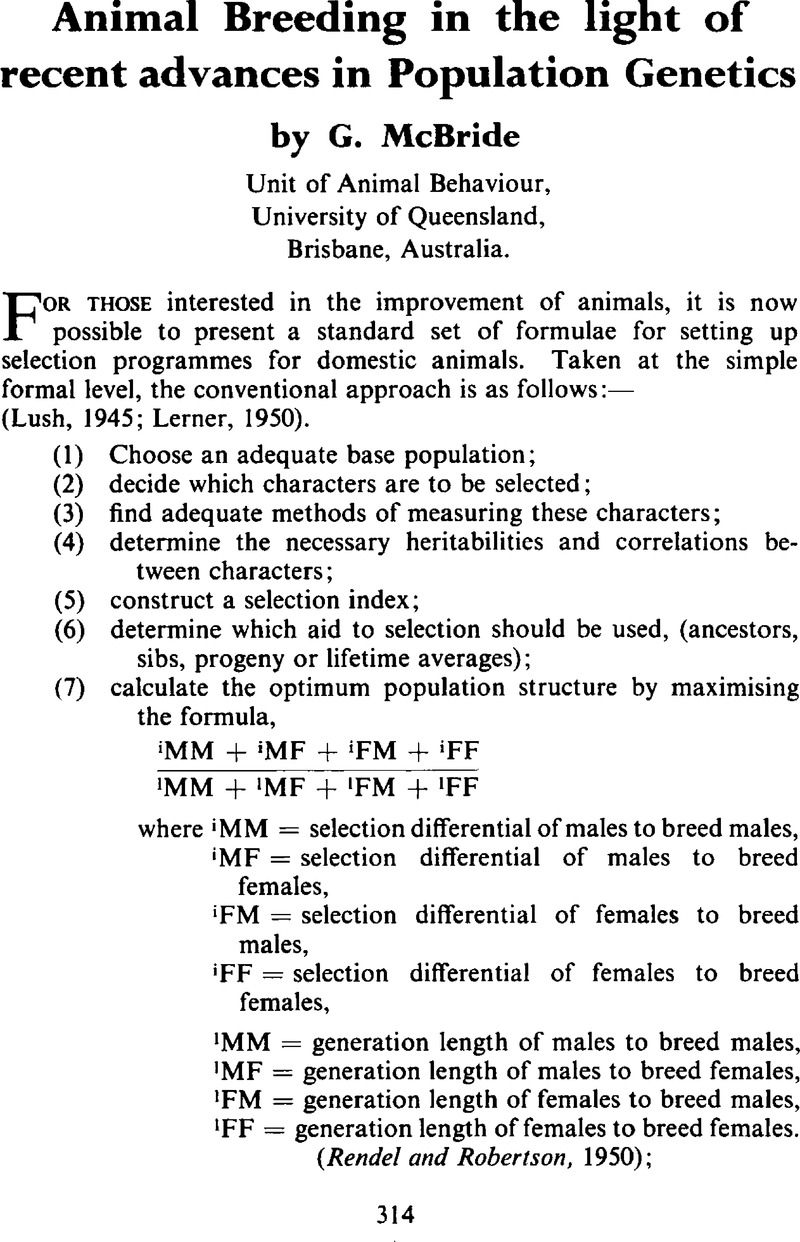Crossref Citations
This article has been cited by the following publications. This list is generated based on data provided by Crossref.
Barker, J. S. F.
1967.
Modern problems of population genetics in animal husbandry.
Der Züchter,
Vol. 37,
Issue. 7-8,
p.
309.



